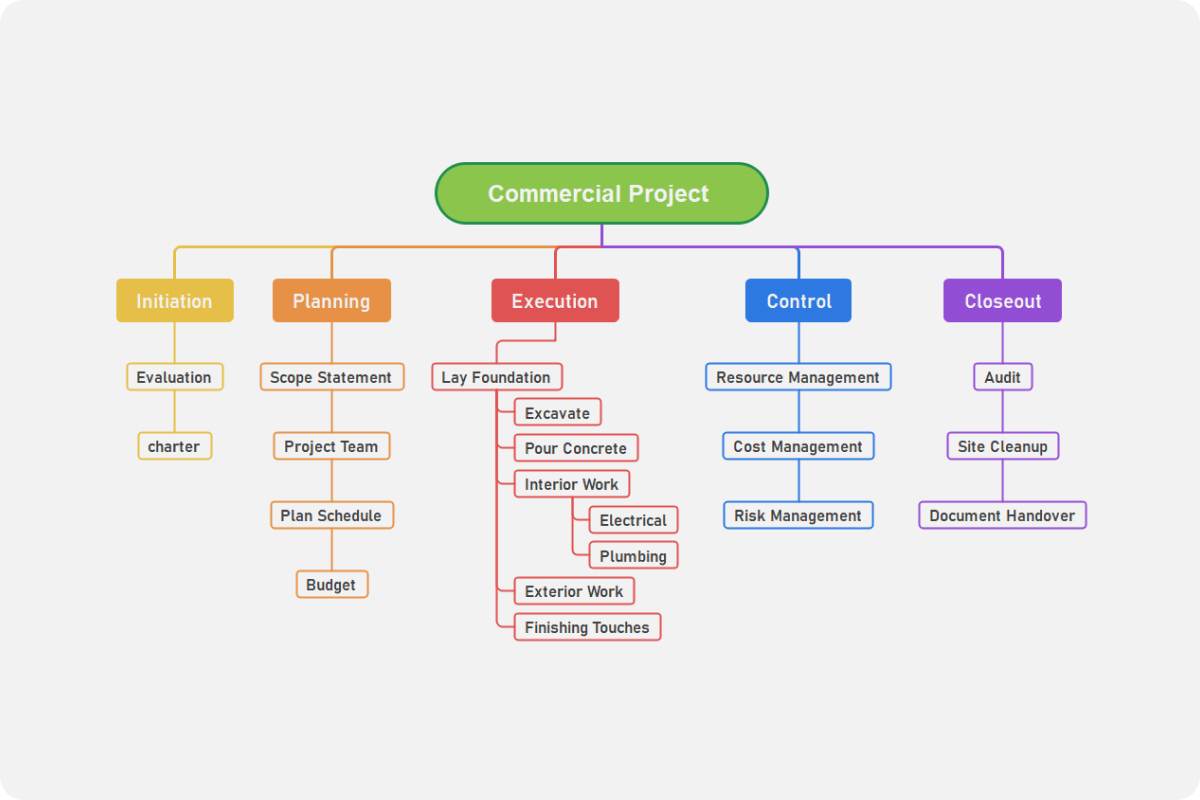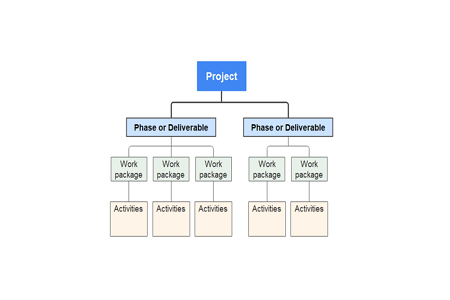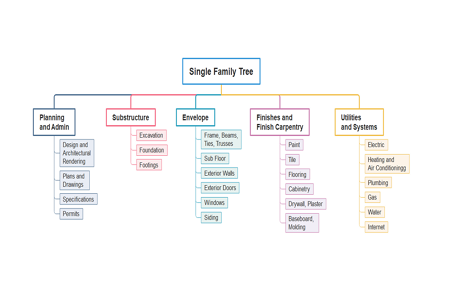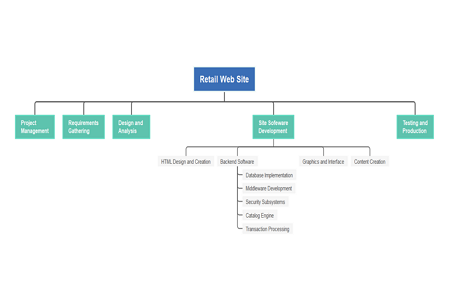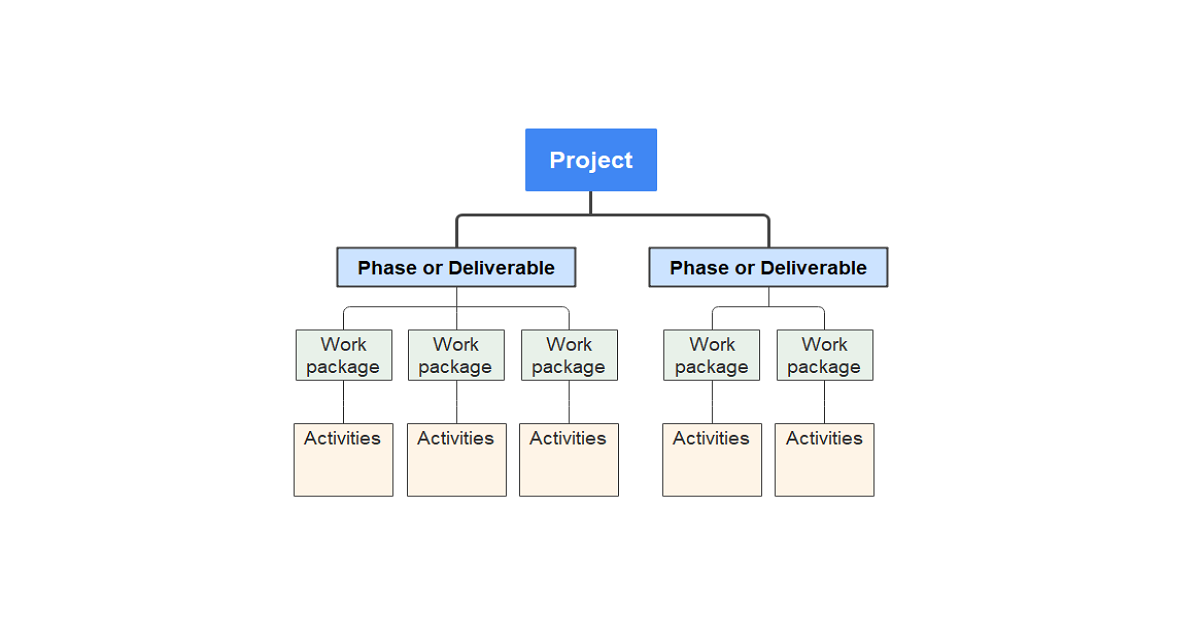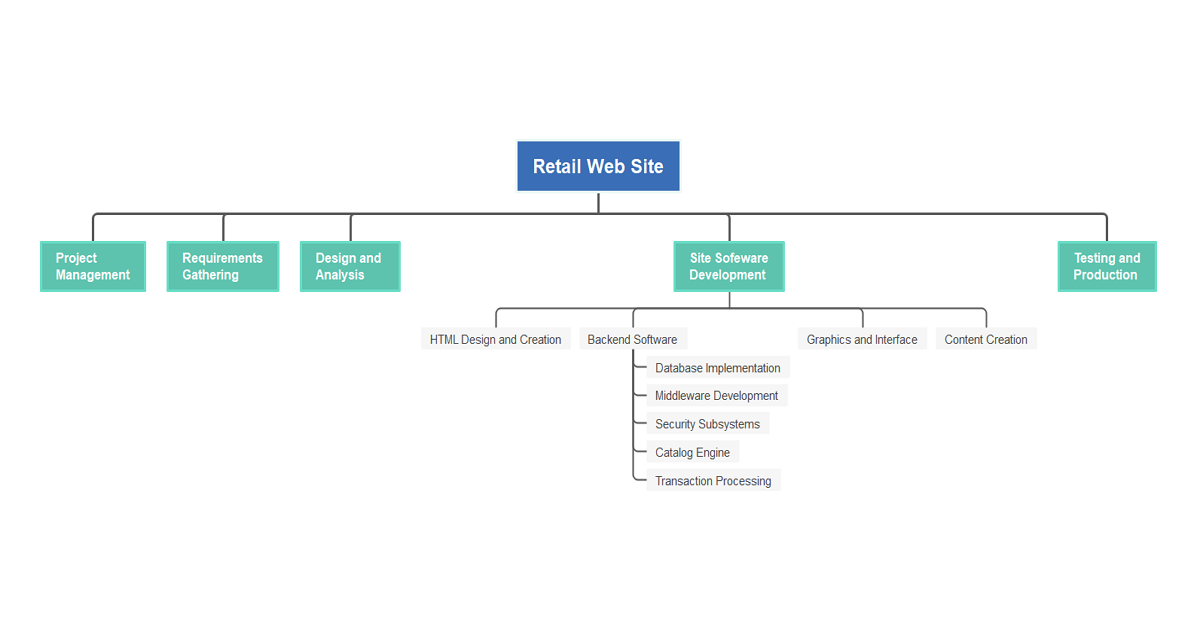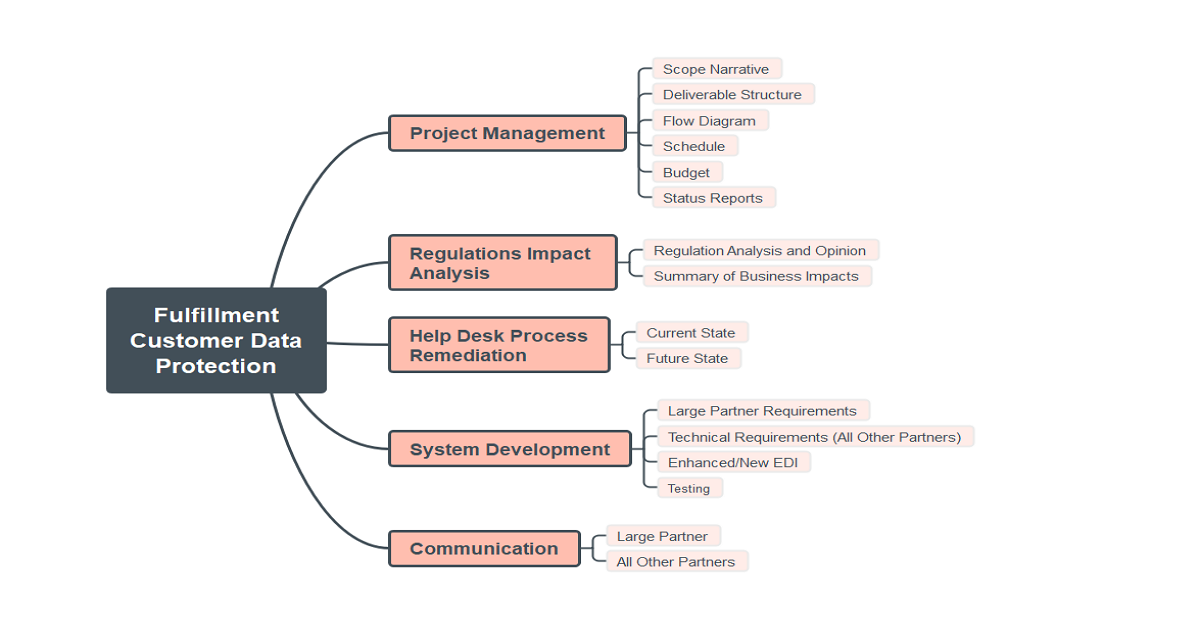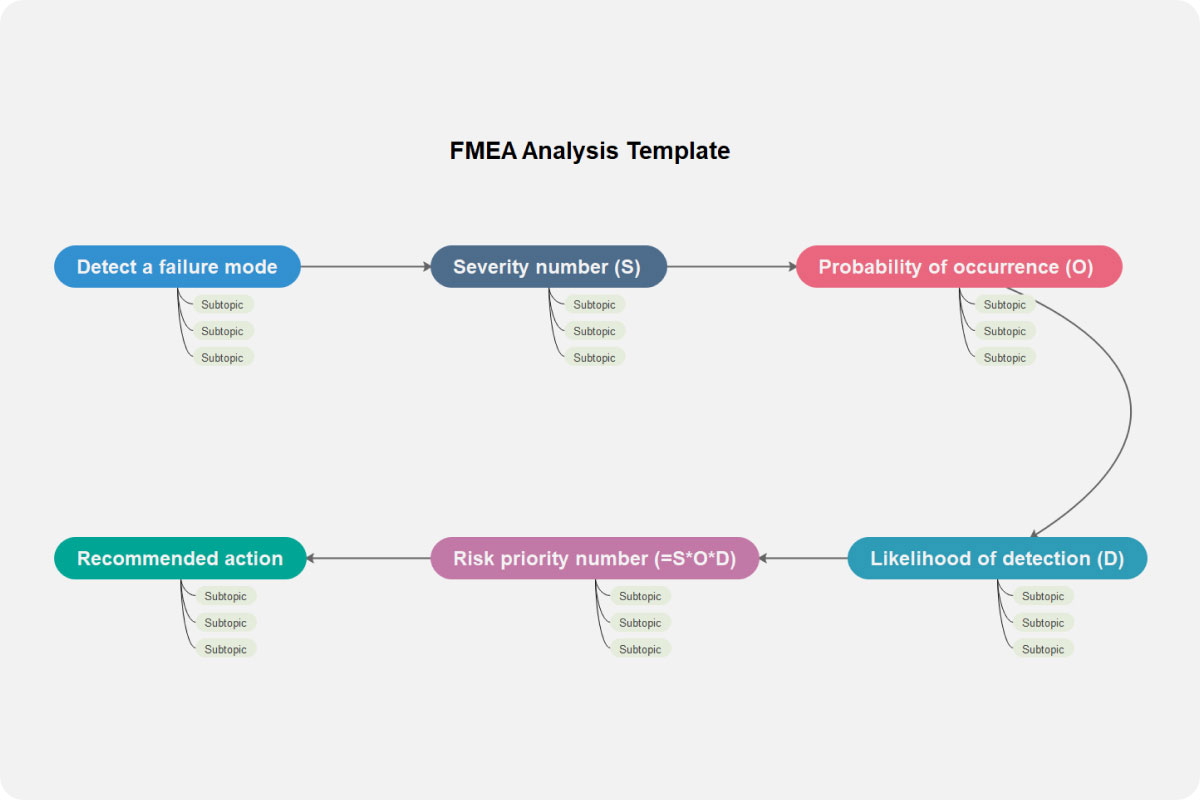About the Work Breakdown Structure Template
When planning for complex projects, an organization must create and follow a particular structure to help manage the complexities and ensure success.
A Work Breakdown Structure is an essential tool for several teams that need an organized, visual representation of the essential work that needs to be done with an additional breakdown of smaller assignments within the project.
When you look at a WBS template, it generally starts with a large project or objective and breaks it down into small, manageable tasks in the lower parts of the diagram. A WBS typically focuses on deliverables with concrete and measurable milestones. These deliverables can come in tasks, sub-tasks, terminal elements, and work packages. Since it is a deliverable approach, you will end up with a detailed plan of the assignments members must create to get the job done. The WBS also guides in estimating costs and resources, creating phased schedule tasks, and managing every phase.
Why use a work breakdown structure?
There are several reasons why a WBS is essential in project management. Below are some of them:
- Estimates project costs
- Assigns responsibilities and clarify every role of members involved in the project
- Identifies risks
- Tracks the progress of the project
- Lays out the project timeline and creates a development out of the given timeframe
- Writes statement of work
- Establishes dependencies
The benefits, as mentioned above, are just general ideas of what you can maximize out of this comprehensive structure. Since it is a hierarchical decomposition of the whole project, it allows you to accomplish project objectives and create deliverables on a given schedule. It is a crucial tool for a service, product, data, or any combination of those projects. Besides breaking down significant deliverables into manageable tasks, a WBS also provides a place to begin a complete cost control and estimating, including scheduling.
How to create a work breakdown structure?
As complex as it may seem, you can create a work breakdown structure template with the three steps:
- The first thing you need to understand is the goals and objectives of your project. This entails identifying what your company is trying to achieve with the project and fitting into the organization’s more significant goals.
- To categorize and classify all deliverables for the project, you first need to gather all the major significant project deliverables. This is the second step of the process and comprises sub-category projects working towards the overall goal and objectives identified in the first step.
- The final step will be breaking down all the high-level deliverables into smaller and more specific tasks. Each task is crucial as it will determine the success of the project. It has to be broken down into more specific categories for team members to address each deliverable clearly.
Tips for making a work breakdown structure
You can refer to the following rules to effectively create a WBS template:
- The 100% rule. The work illustrated by your WBS must have 100% of the work needed to complete the overall project goal without the inclusion of unrelated work and deliverables. Also, the sub-tasks on any level must account for all the deliverables necessary to complete the higher-level task.
- Focus on the outcome, not the action. For an effective WBS, a project manager or a team must focus on the results and deliverables instead of actions. To put it into context, when building a bicycle, the deliverable could be 'the braking system' while the action might be 'calibrate the brake pads.'
- Mutually exclusive. Sub-tasks must not have any duplicates. Doing so will defeat the purpose of the 100% rule and will likely lead to miscalculations.
- Three levels. The WBS must generally contain about three levels of detail. There could be branches of the WBS with more subcategories than the others, but if you see that most branches have three levels, the level of detail and the scope of the project in the WBS are just about right.
- The 8/80 rule. This rule explains that the work package must take no less than eight hours of work effort, but not more than eighty. Some suggest the work package must not be more than ten days.
- Create assignments. The purpose of a WBS is not only to classify deliverables but also to ensure that all the project members have assigned specific tasks. Work should not overlap, so functions will be precise.
Work Breakdown Structure Examples
WBS can be comprehensive with several kinds. Check out some of them below:
Work Breakdown Structure Example for Project Management
The example above shows a detailed WBS of a villa construction. As you can see, it is not the usual WBS classified in a hierarchy. Since this WBS is created in Excel, the project manager can clearly illustrate the names of the tasks on the leftmost part of the chart. It also shows the level of priority and the timeline for each task. And since it is a vast project, the creator included the percentage of completeness for every task. It typically looks complicated from afar; however, all the essential details are being laid out to ensure project success.
